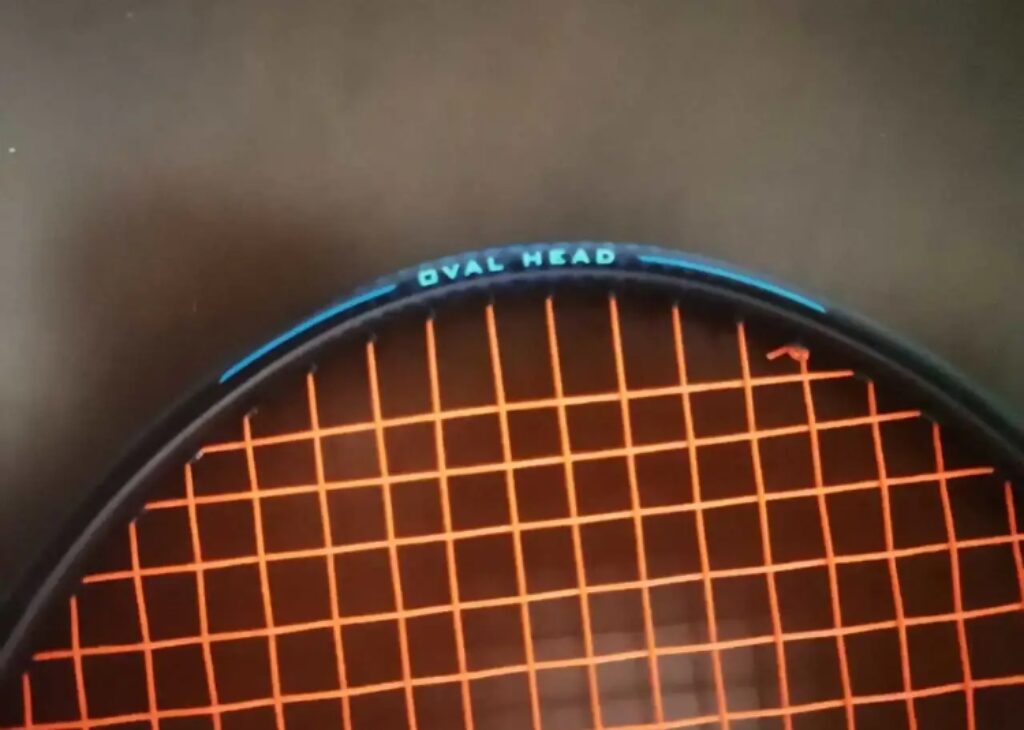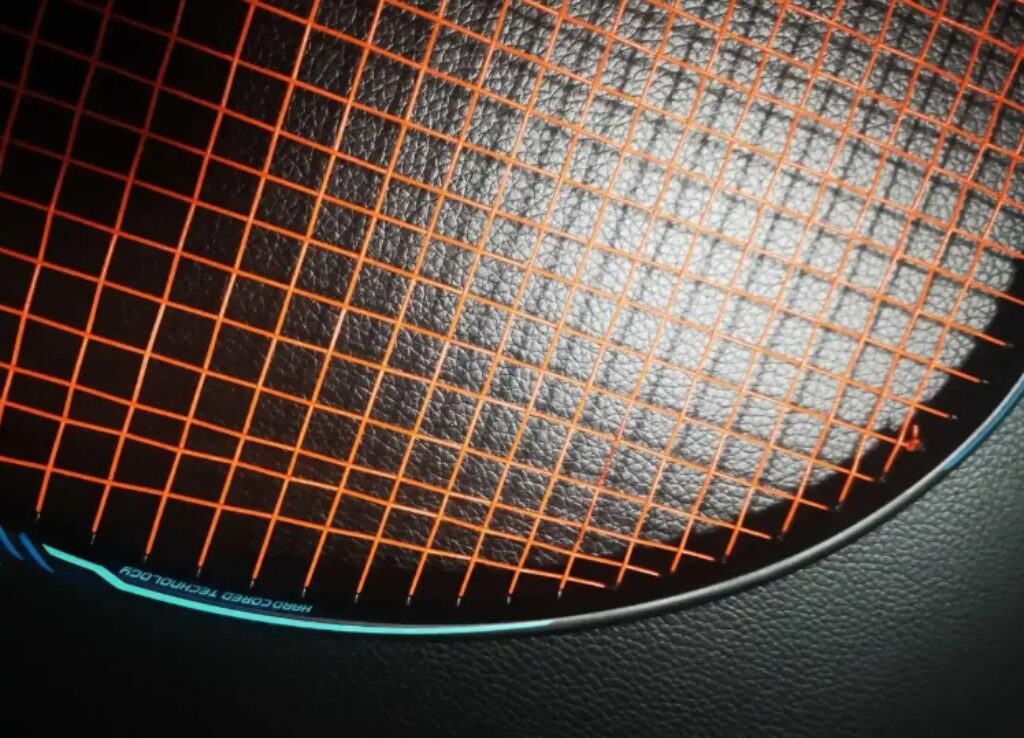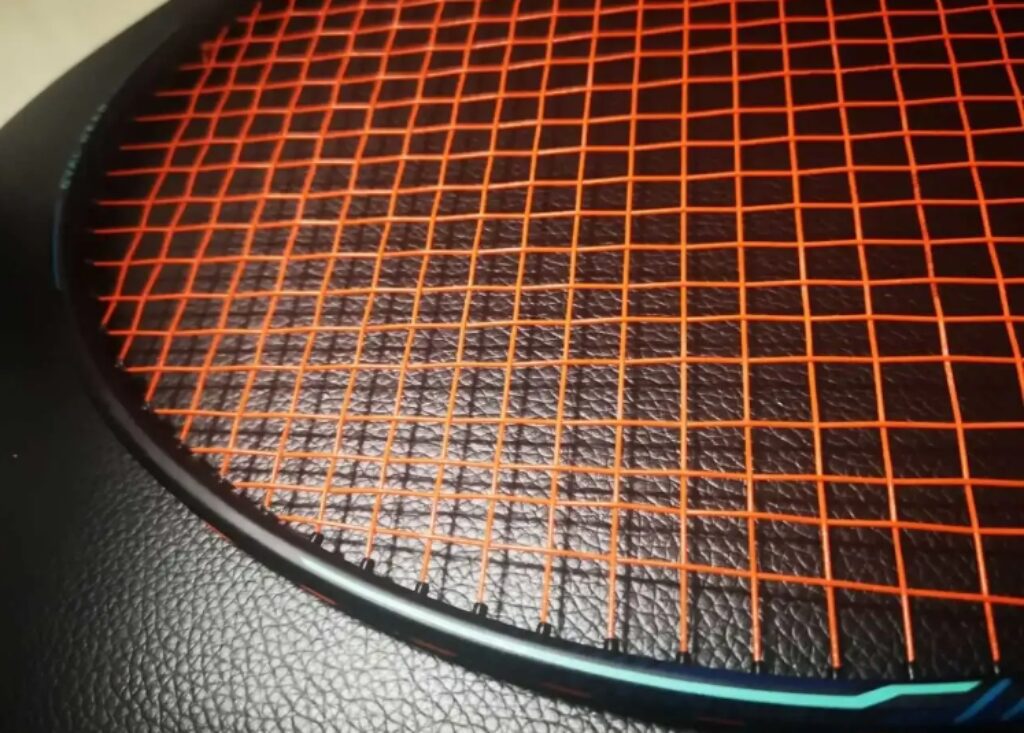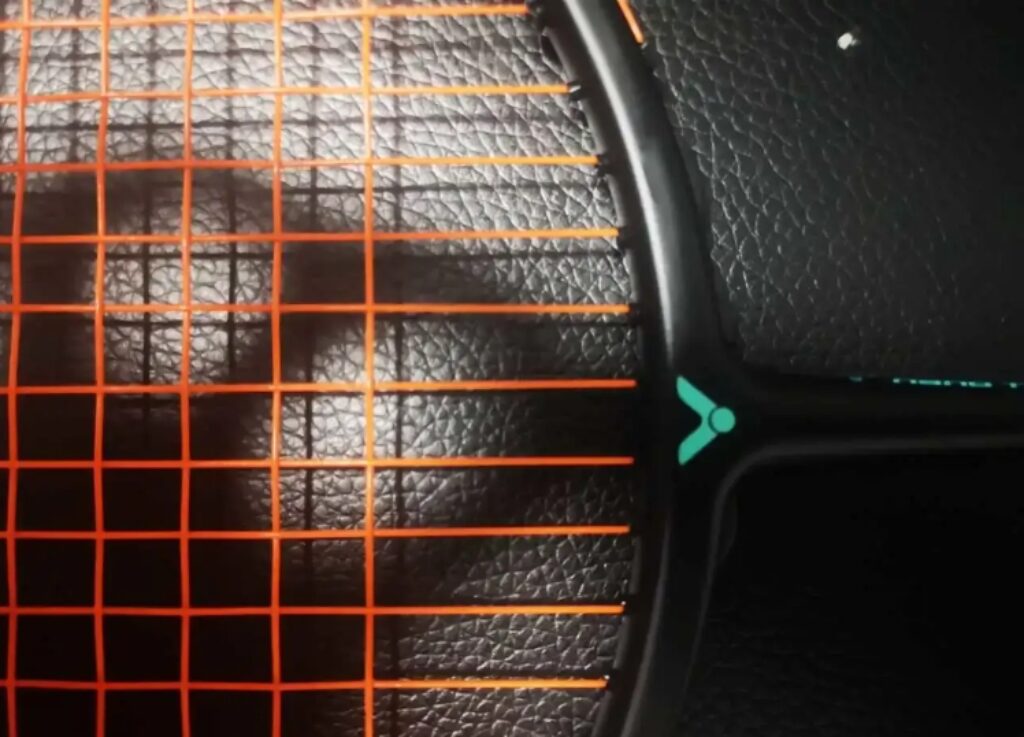The series has always had some internal distinctions between high and low tiers. According to official data, the pricing for the COLUMBIA 3 is the lowest, with COLUMBIA 2 and COLUMBIA 5 in the mid-range, and COLUMBIA 6 being the most expensive.
This time, I’ve achieved a small milestone: completing the entire Columbia series. The last one, COLUMBIA 2 is truly the most unconventional and non-mainstream of the entire series.

Specifications: 4UG5, full configuration weight of 86g without the bottom cap, balance point of 305mm, 7.0mm Pyrofil carbon shaft, 220mm shaft length, stiff tuning, egg-shaped frame, 72-hole string bed, 8-4 o’clock string grooves, 28lbs warranty, strung with 25-27 BG80p.
In terms of appearance, it’s very different from the boldness of its other siblings in the series, instead coming across as somewhat understated, with a deep, dark fantasy vibe. The primary tone is graphite black with cyan-blue accents. Aside from the performance parameters printed on the shaft and the Columbia series decoration at the 12 o’clock position, the racket is quite minimalist overall. It seems to contain a kind of indescribable power. This is the Columbia racket that resonates with my aesthetics the most.

In terms of performance, it’s non-mainstream for four reasons: the grip, the shaft, the frame, and the string bed. First, it’s the only racket in the series that comes exclusively with a G5 grip, whether in 3U or 4U. Secondly, the shaft diameter of COLUMBIA 2 is 7.0mm, unlike its siblings’ usual 6.4mm. Thirdly, the frame material includes Pyrofil carbon, which is rare across the entire Victory racket lineup. Lastly, it uses the series’ only 72-hole string bed layout.
When first holding it, you can sense the significance of these changes—it feels like they were trying to make COLUMBIA 2 a suitable egg-shaped racket for fast-paced doubles play. Indeed, although it retains the series’ signature head-heavy feel, the balance point is relatively less extreme, having minimal impact on swing speed. The more streamlined frame noticeably helps reduce wind resistance. During dry swings, I realized that this is the fastest swinging Columbia racket.

During the warm-up with some clears, I felt something unusual: a combination of violent power and speed. The former is easy to understand, as it’s a feature of the series—the sharp sound when hitting the sweet spot and the frightening shuttle speed. However, the current setup of VBS68p strings, which are supposed to have stronger ball-holding characteristics and medium hardness, didn’t quite show those features. Instead, it provided a crisp feeling when hitting the shuttle. The 7.0mm stiff shaft, 72-hole string bed, and the Pyrofil carbon used in the frame all contributed to this. Furthermore, the swing speed of COLUMBIA 2 reached the threshold of “fast,” and the G5 grip size made quick movements and switching between forehand and backhand more agile.
As a result, the racket’s passive defense and drive performance represent the highest level in the series. Quick, responsive returns, good speed in rallies, relatively low wrist strain, and easier angle adjustments give the racket significant strength in mid-to-front court exchanges, although it still can’t quite compete with speed rackets.

In terms of attack, COLUMBIA 2 is slightly less aggressive. Its potential for smash power is limited by the lighter swing weight, but it still has decent downward pressure. However, the racket faces two main challenges. One is that the crisp shuttle release and its relatively balanced nature require more explosive power from the user when smashing. Unlike rackets like “356,” where you can rely on swing inertia to aid in attack, with this racket, you need to exert more force yourself and shorten the power stroke. The other challenge is that the increased swing weight and changes in the frame material make the racket feel more vibration-prone during heavy hits, and the feedback isn’t as pleasant.
That said, the speed and power of the shuttle release are still quite good, and the loud sound it produces can be intimidating. It also led to a rather sneaky mixed doubles strategy—starting the game with two full-power smashes to scare the opponent, and then, on every favorable rear-court shot, jumping to smash towards the female player’s flat clears. It’s quite effective!

However, it’s still a racket with a peculiar temperament. Multiple tests showed that its performance varied depending on my physical condition on the day. The first time I used it, I was very satisfied with the power I could handle, but on days when I was slightly off, I couldn’t manage it as well. For those who like playing in the rear court but are on a budget and can’t afford an “88D,” you might want to give this one a try.
It’s an odd racket in an odd series, hitting all the right aesthetic points for someone like me who loves unusual gear. However, it’s so niche that its distribution channels and availability are extremely limited. I don’t think this racket is going to become popular.


Leave a Reply